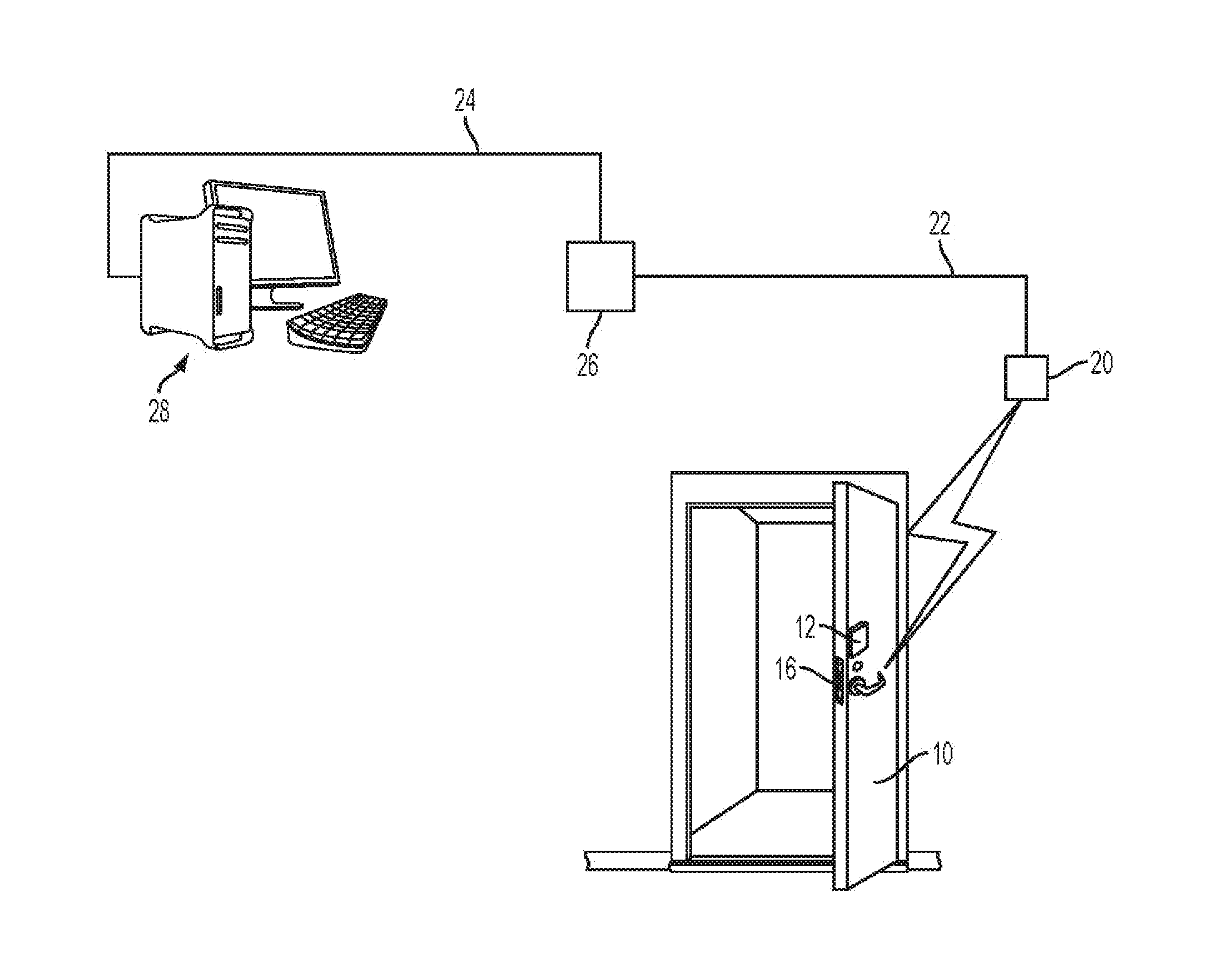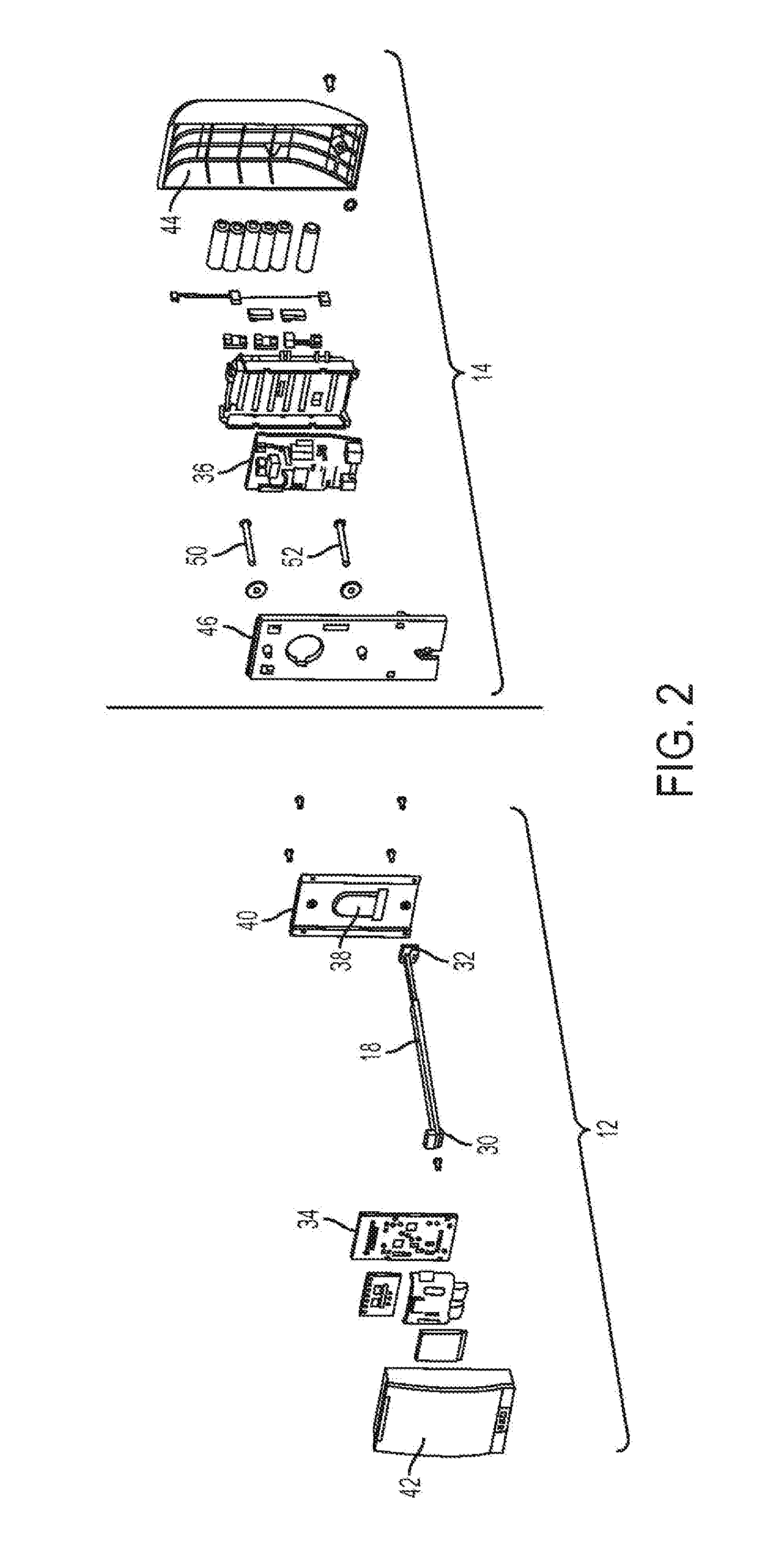Fire actuated release mechanism to separate electronic door lock from fire door
a release mechanism and electronic door lock technology, applied in the field of fire-rated electronic door locks, can solve the problems of difficult to meet this standard, many types of plastics will eventually begin to burn, and the relative low ignition temperature of these materials, so as to increase the pulling distance, increase the length of the sma wire, and maximize the distance of the sma material
- Summary
- Abstract
- Description
- Claims
- Application Information
AI Technical Summary
Benefits of technology
Problems solved by technology
Method used
Image
Examples
Embodiment Construction
)
[0050]In describing the preferred embodiment of the present invention, reference will be made herein to FIGS. 1-10 of the drawings in which like numerals refer to like features of the invention.
[0051]Referring to FIGS. 1 and 2, a fire door 10 has an electronic lock 12 mounted on a surface thereof. The lock portion 12 shown in FIG. 1 is electrically connected through the fire door 10 with electrical wires 18 to another portion of the lock 14 (see FIG. 2) located on the back side of the door.
[0052]The electronic lock 12, 14 functions to control mortise lock 16. The present invention will be illustrated in connection with a mortise lock design, however, the electronic lock may be used with bored locks, exit devices and other fire door hardware.
[0053]The electronic lock 12, 14 is wirelessly connected through wireless access point 20 and is then connected to computer 28 through wires 22 and 24 and other network circuitry 26, which may be hubs, switches, routers or the like, or other cus...
PUM
 Login to View More
Login to View More Abstract
Description
Claims
Application Information
 Login to View More
Login to View More - R&D
- Intellectual Property
- Life Sciences
- Materials
- Tech Scout
- Unparalleled Data Quality
- Higher Quality Content
- 60% Fewer Hallucinations
Browse by: Latest US Patents, China's latest patents, Technical Efficacy Thesaurus, Application Domain, Technology Topic, Popular Technical Reports.
© 2025 PatSnap. All rights reserved.Legal|Privacy policy|Modern Slavery Act Transparency Statement|Sitemap|About US| Contact US: help@patsnap.com



